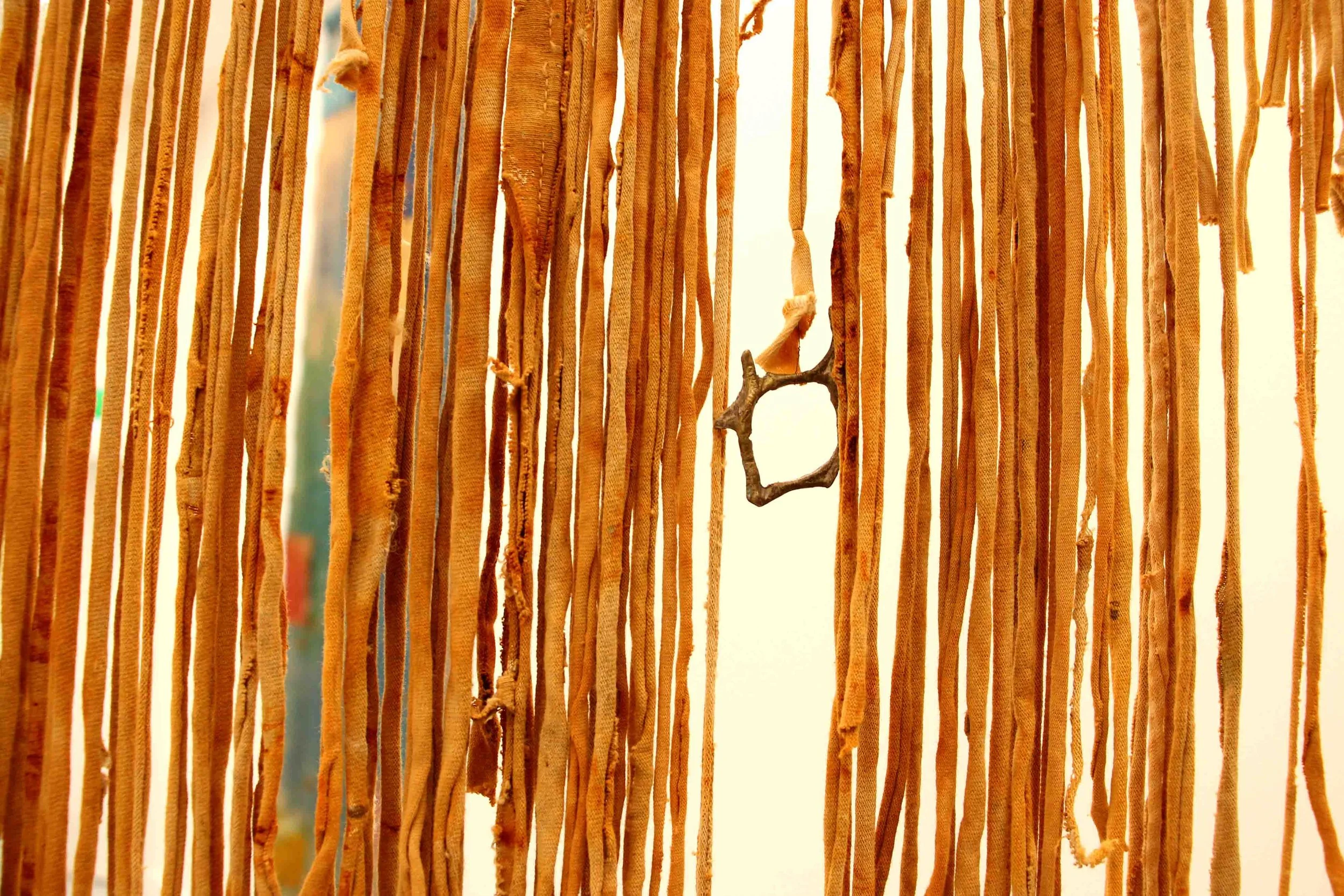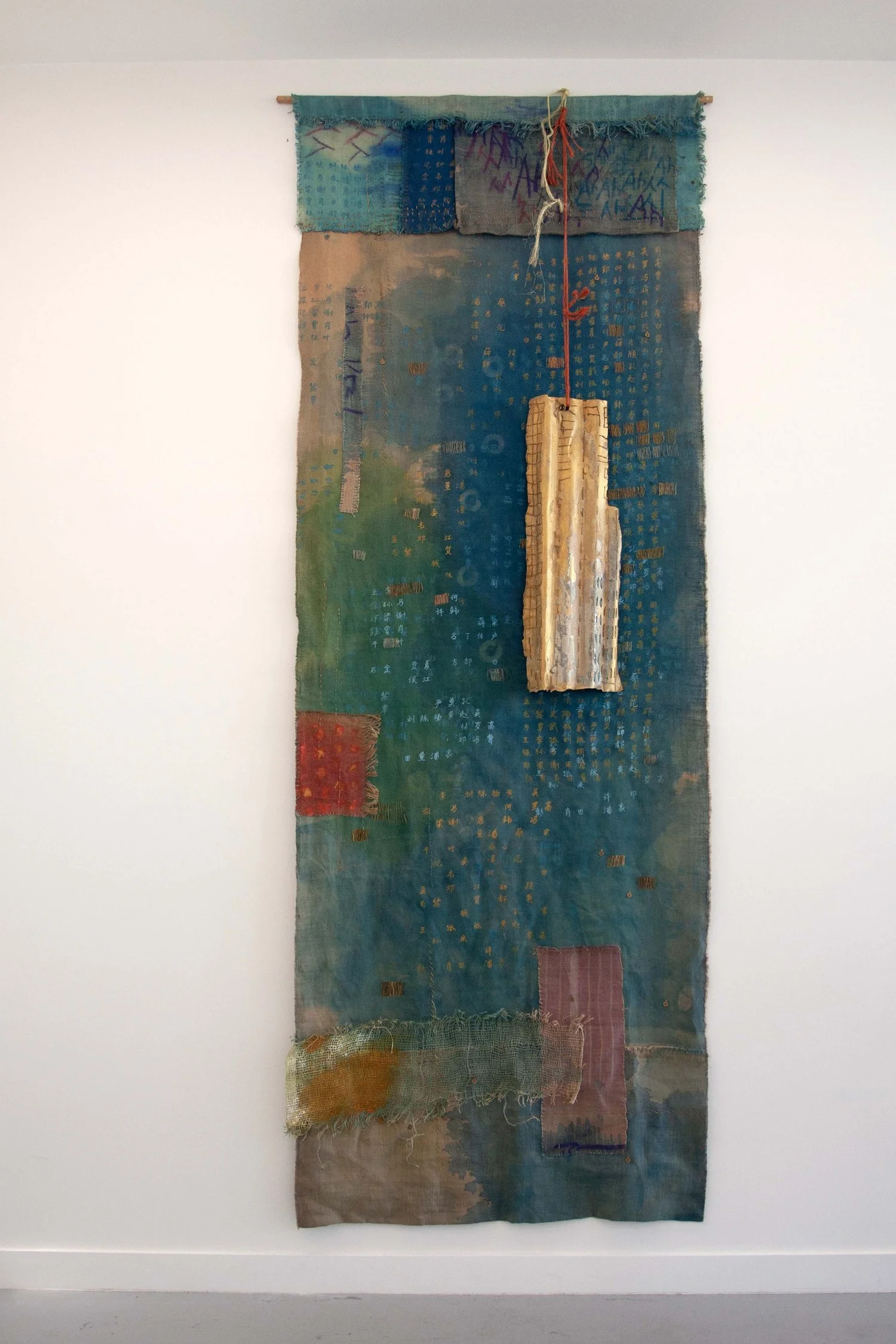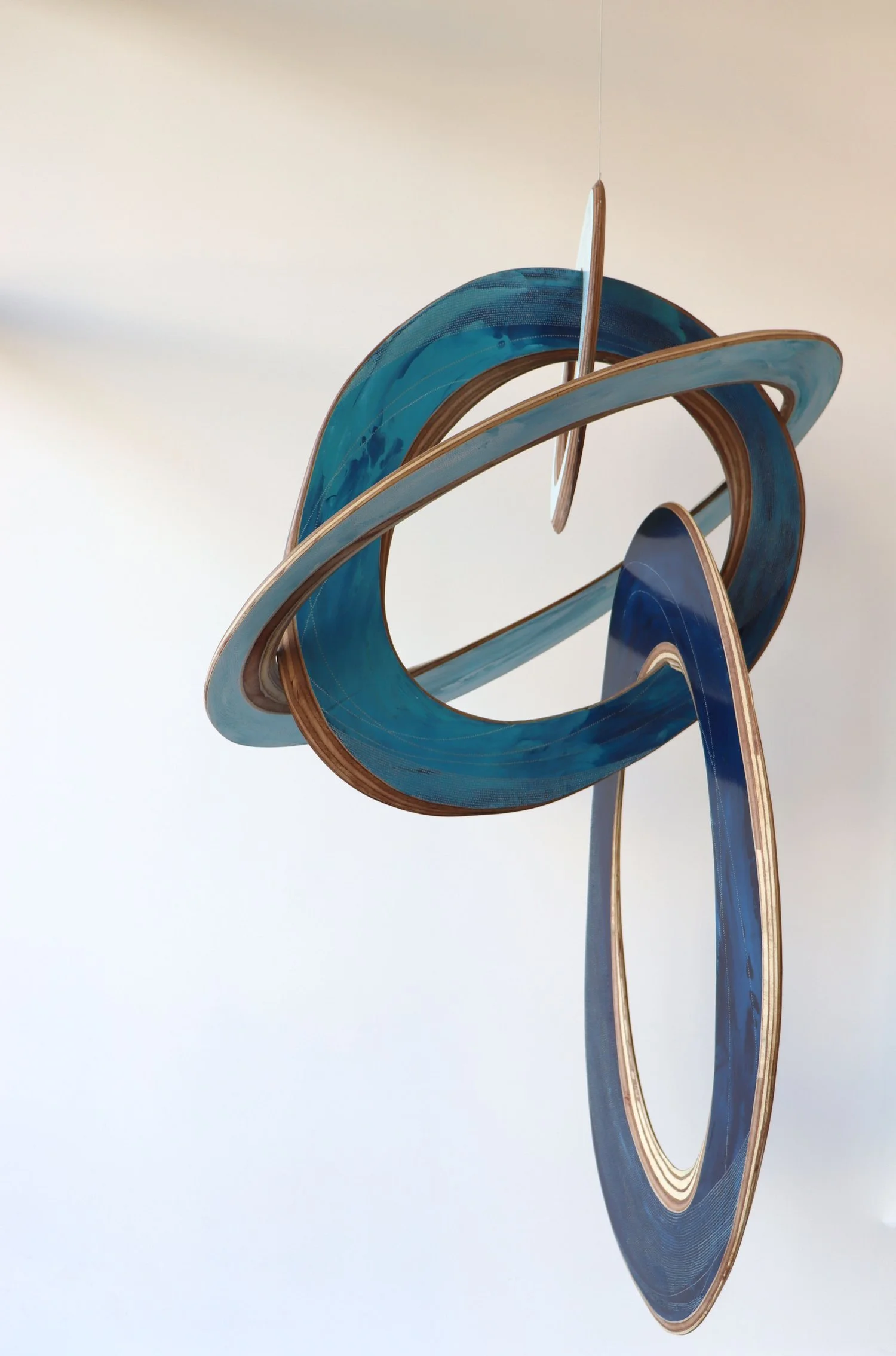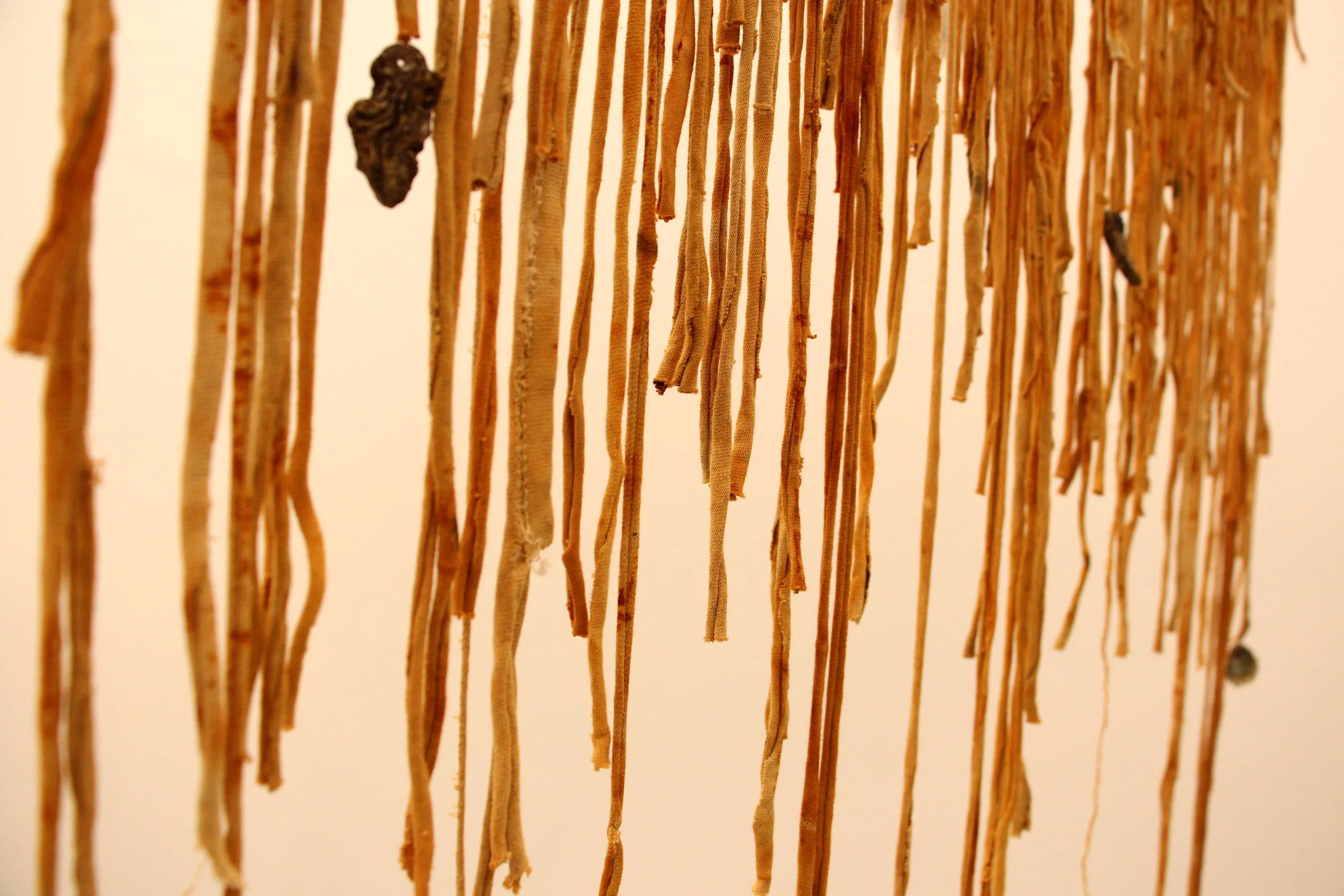Group Show / MATERIALITY
August 2, 2023 - September 3, 2023
DRAW Space
A group show grounded in the artist's bond with the environment, nurturing a range of drawing practices contending with the material as the medium. MATERIALITY entwines several ecological mark-making processes in temporal and spatial dialogue. Each artist navigates an experiential reading of time in the environment, drawing on the textured surfaces of the surrounding matter and material processes.
Artists: Sadhbha Cockburn, Penny Coss, Kristy Gordon, Joyce Lubotzky, Emma Pinsent, Chrystal Rimmer, Brigitta Summers, and Mei Zhao
In 2024, MATERIALITY was nominated for an IMAGinE Award (Exhibition Projects - small organisation category). It has produced two sequel exhibitions with MATTER (2024) at Woollahra Gallery at Redleaf and MASS (2024) at Curl Curl Creative Space. Daniel Press received the 2024 Northern Beaches Emerging Curator Award to develop MASS.
“In the exhibition Materiality, eight artists collectively challenge and transcend the conventional nature/culture divide, presenting an exploration of the interconnections between humans and their environment”.
— Dr Chelsea Lehmann
Mei Zhao, 'Dream Home I', 2023. Acrylic, ink, pastel, screen printing, found objects, embroidery and buttons on hessian. Image courtesy of the artist.
Joyce Lubotsky, 'Entanglements', 2023. Installation with wall-hung clothes rack, found discarded pegs, socks, hair ties, rope, handmade seaweed paper, and seaweed. Image courtesy of the artist.
Chrystal Rimmer, 'The Oyster Dreams of Kelp Forests', 2023. Aluminium waste. Image courtesy of the artist.
Kristy Gordon, 'Deepwater', 2023. Suspended sculpture of acrylic on carved ply. Image courtesy of the artist.
Sadhbha Cockburn, 'Spun honey', 2023. Beeswax and honey found during renovation of gallery site, the artist’s hair, and steel. Image courtesy of the artist.
Penny Coss, still of 'Turbid Sweep', 2023. 2-hour performance, 6pm-8pm on Wednesday 2 August. Single channel performance documentation, 11:58 min duration. Image courtesy of the artist.
Emma Pinsent, 'Residual edges' detail, 2023. Cotton t-shirt, rust, copper wire, nickel bronze, seawater patina, pine dune fence post, wire, and stainless steel hooks. Image courtesy of the artist.
Brigitta Summers, 'Bleeding Heart Story', 2023. Frottage and screen print on kozo paper with scroll mounted in a book box. Image courtesy of the artist.
Materiality
catalogue essay by Dr Chelsea Lehmann
In the exhibition Materiality, eight artists collectively challenge and transcend the conventional nature/culture divide, presenting an exploration of the interconnections between humans and their environment. Through a variety of material approaches, the artists touch on ideas of ecofeminism, environmental ethics, transformation, entanglement, and place-making.
Sadhbha Cockburn’s artworks Bloom where you are planted (2023) and Spun honey (2023) were inspired by a beehive found onsite during the refurbishment of the gallery space. Spun Honey was made by casting the beehive into waxy spools that provide an anchor for threads spun from the artist's hair. For the artist, stringing cordage is a habitual motion that sediments place within the body, grounding her in both space and time. Similarly, Bloom where you are planted considers the relationship between place and ‘home’. Made from 1225 cotton sutures of embroidery thread woven into plasterboard, the work draws parallels between skin and walls; the stitches are a trace of an intuitive and compulsive pursuit of belonging. These works explore how the repetition of identical actions is fundamental to both the physical and psychological construction of home.
Responding to ideas of materiality, Penny Coss presents her performance piece titled Turbid Sweep (2023). In this work she uses calcium carbonate mixed with water to create floor-based motifs inspired by the wave-like structure of stromatolites. These drawings leave behind a delicate powder that is later swept across the floor and collected at the rear of the gallery. Stromatolites, formations in aquatic environments consisting of sediment and microbial mats, serve as a source of inspiration for Coss's exploration of ‘stratigraphic thinking.’ This approach allows her to delve into the interconnectedness between human and other-than-human elements. By examining the assemblages of geological, moral, and political perspectives, ‘stratigraphic thinking’ speaks to the ways human agency is shaped by situated knowledge.
Kristy Gordon's artwork for Materiality draws inspiration from slow art processes that focus on cumulative, repetitive mark-making, and embodied gestural drawing. In Wave Motion II (2023), she arranges lightly interleaved and looped forms in semi-transparent, sheer, and stippled layers on paper, evoking the intriguing phenomenon of wave diffraction and refraction. These forms suggest the way waves bend around obstacles, flow through openings, and transition between different mediums. In her suspended artwork Deepwater (2023), similar elliptical forms take on a tangible presence through carved ply, mirroring the interlacing of forms in the drawing. This evokes a sense of interconnectedness and fluidity, inviting viewers to actively engage with the piece by moving around it and immersing themselves in its dynamic qualities.
Joyce Lubotzky’s installation reimagines domestic fabric laundering using found objects from the coastal area. These discarded objects, entangled with seaweed become peculiar hybrids of the natural and humanmade. Handmade paper created from ocean materials like seaweed, microplastics, sand, and saltwater hangs alongside these objects to create a new ‘fabric’. Joyce says, “I think of the women throughout history who would take clothes to the water to wash them by hand. How they would take care of the clothes as a way of nurturing and protecting the body, the family, and the notion of civility. We have used ‘nature’ to clean ourselves. But now the ocean returns what we give it: not our care, but our waste.” The installation underscores the fraught relationship between humans and their environment by displaying the strange fruits of our consumerism combined with organic matter.
In a similar vein Emma Pinsent repurposes components from human and non-human sources to form a sculptural arrangement that intersects the gallery. Suspended from a wire connected to a nearby wall and a found pine fencing post, old t-shirts transformed into rust-seeped yarn create a soft barrier. Bronze casts of seashells patinated with seawater are both suspended from the tendrils of fabric, and carefully positioned on the floor and adjacent fence sections, drawing the eye around the gallery space. The installation responds to the weathering of intertidal zones and embodies concerns about climate and ecological upheaval. In the gallery setting, the individual elements of the work undergo continuous transformation, forming a dynamic contact zone that prompts viewers to reflect on their position within these processes and amongst the thick temporality of climate change.
Chrystal Rimmer’s works The Oyster Dreams of Kelp Forests (2023) and Time Keeping (2023) respond to her residency with Sail Britain in which she embarked on a research expedition, sailing the remote Western Isles of Scotland from Oban to Ardrossan. Collaborating with academics, she studied the impact of plastic waste on the ocean and its foreshore, charting remote islands and lochs. Her new artworks feature casts taken from the shoreline of the Isle of Arran including seaweeds and molluscs. Using distinctive techniques to transform plastic and aluminium waste, Rimmer converts these fleeting objects into enduring forms. By fossilising kelp in aluminium and oyster shells in plastic, her sculptures reimagine the relationship between materials and time. The artworks’ unfamiliar textures present alternative forms of geological and biological matter, suggesting the symbiotic web of interdependencies that connect us to each other, other species, and the planet.
Brigitta Summers’ artworks, A Feeling of Skin (2023) and Bleeding Heart Story (2023), aim to redefine her connection to the environment amidst the climate crisis. Inspired by trees, she explores alternative relations between human and non-human entities that emphasise dialogic and reciprocal entanglement with the world. Through woodcuts and artist books, Summers investigates how to ‘think with’ trees and reimagine their role as both living beings and material, using techniques such as frottage to index the rich textures of tree trunks. Summers seeks to move beyond the prevailing view in western society that emphasises human dominance and separation from nature. In doing so, she highlights the role of touch in reshaping her relationship with the environment and inviting the haptic gaze of the viewer.
In her artwork Dream Home I (2023), Mei Zhao delves into the under-represented influence of early Chinese settlers on the Australian landscape, particularly focusing on Chinese market gardens in Sydney and regional NSW. Through expressive gestures, pattern, and text, Zhao vividly portrays these historical narratives in a scroll-like abstract painting that occupies the full height of the gallery wall. Using diverse materials like hessian and found corrugated iron, Dream Home I speaks to the aspirations of these migrants who yearned for a better life in Australia. However, the reality for many was to work as farm laborers and dwell in humble hessian tents. For them, a mere piece of tin on the tent roof represented the embodiment of their dream home, a form of place-making in which human dwellings were closely intertwined with the land.
Human culture emerges from and engages with the natural environment, forming a complex feedback loop where both humans and non-humans co-create and become deeply intwined. In Materiality, the artists interrogate this interdependence, contemplating the consequences of human existence on earth and confronting the emotional and psychological impacts of ecological and climate change during the Anthropocene era.
Dr Chelsea Lehmann
© August 2023








